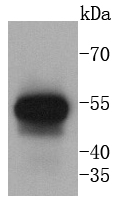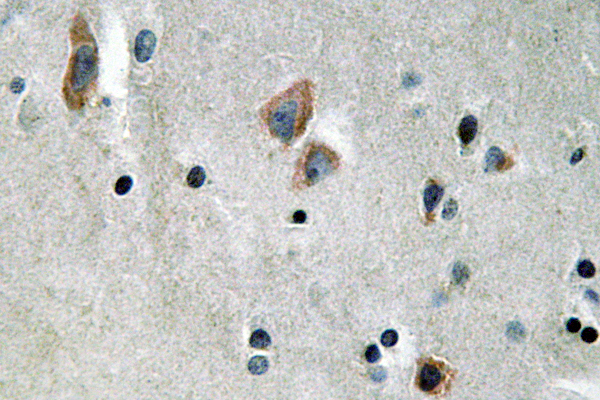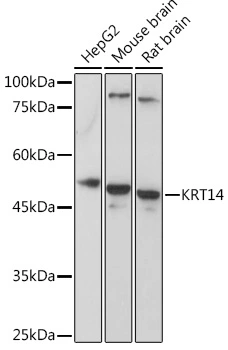Cytokeratin 14 antibody [LL002]
GTX76600
ApplicationsFlow Cytometry, ImmunoFluorescence, Western Blot, ImmunoCytoChemistry, ImmunoHistoChemistry, ImmunoHistoChemistry Frozen, ImmunoHistoChemistry Paraffin
Product group Antibodies
TargetKRT14
Overview
- SupplierGeneTex
- Product NameCytokeratin 14 antibody [LL002]
- Delivery Days Customer9
- Application Supplier NoteIHC-P: 1/200. FACS: 1/100. *Optimal dilutions/concentrations should be determined by the researcher.Not tested in other applications.
- ApplicationsFlow Cytometry, ImmunoFluorescence, Western Blot, ImmunoCytoChemistry, ImmunoHistoChemistry, ImmunoHistoChemistry Frozen, ImmunoHistoChemistry Paraffin
- CertificationResearch Use Only
- ClonalityMonoclonal
- Clone IDLL002
- Concentration1 mg/ml
- ConjugateUnconjugated
- Gene ID3861
- Target nameKRT14
- Target descriptionkeratin 14
- Target synonymsCK14, EBS1, EBS1A, EBS1B, EBS1C, EBS1D, EBS3, EBS4, K14, NFJ, keratin, type I cytoskeletal 14, cytokeratin 14, keratin 14, type I
- HostMouse
- IsotypeIgG3
- Protein IDP02533
- Protein NameKeratin, type I cytoskeletal 14
- Scientific DescriptionThis gene encodes a member of the keratin family, the most diverse group of intermediate filaments. This gene product, a type I keratin, is usually found as a heterotetramer with two keratin 5 molecules, a type II keratin. Together they form the cytoskeleton of epithelial cells. Mutations in the genes for these keratins are associated with epidermolysis bullosa simplex. At least one pseudogene has been identified at 17p12-p11. [provided by RefSeq, Jul 2008]
- Storage Instruction-20°C or -80°C,2°C to 8°C
- UNSPSC12352203
References
- Morita N, Onodera S, Nakamura Y, et al. Keratinocytes from Gorlin Syndrome-induced pluripotent stem cells are resistant against UV radiation. Med Mol Morphol. 2021,54(2):69-78. doi: 10.1007/s00795-020-00264-4Read this paper







